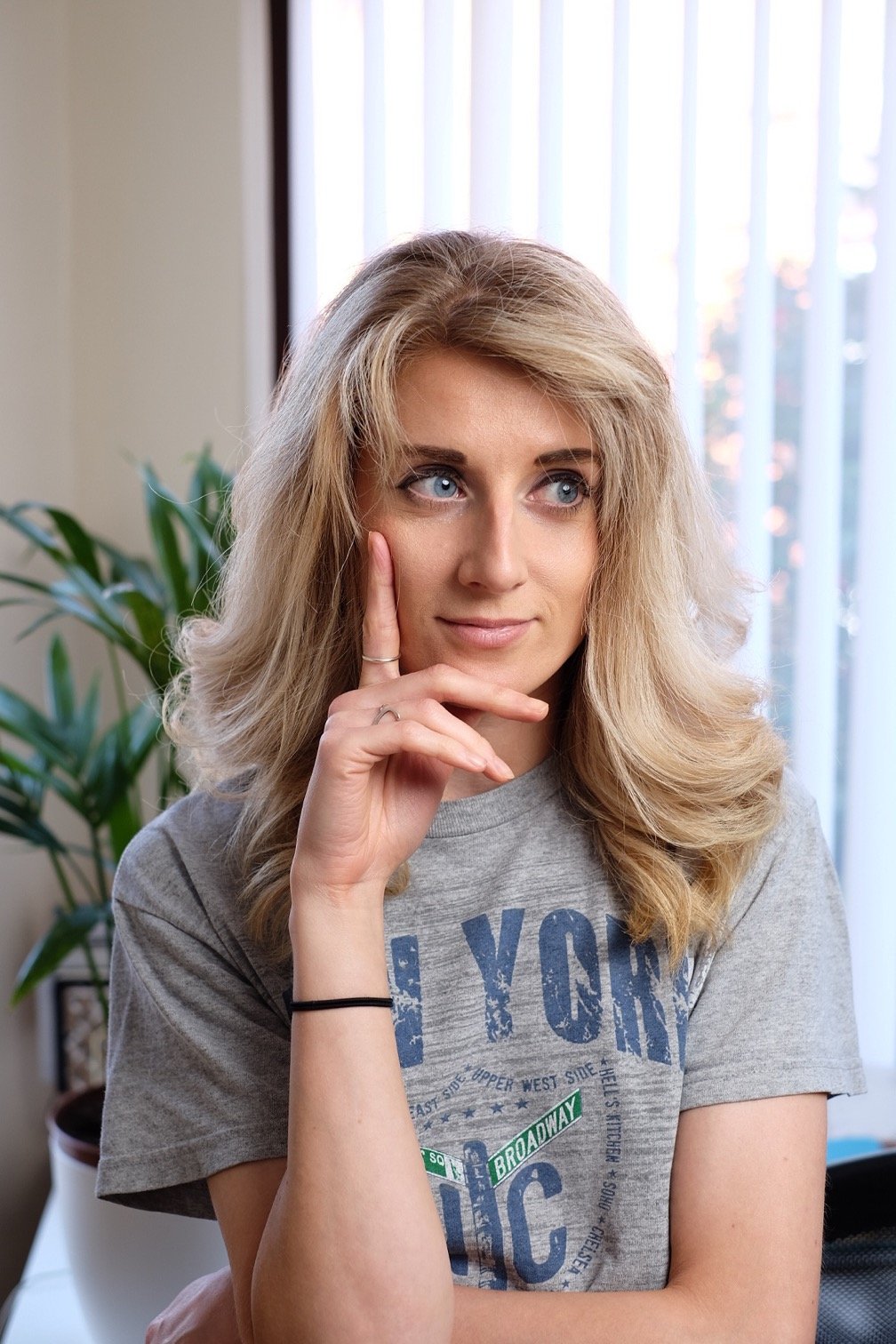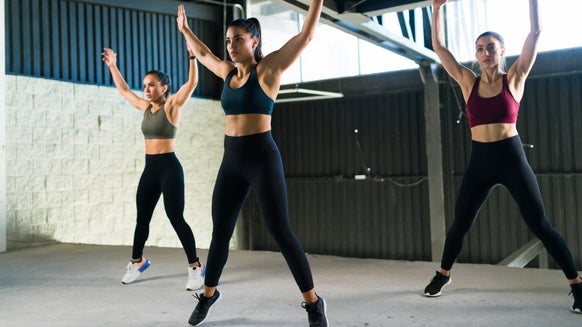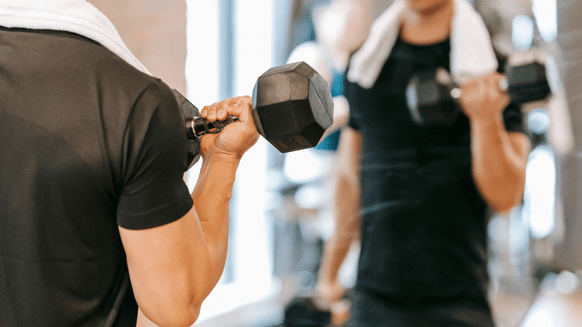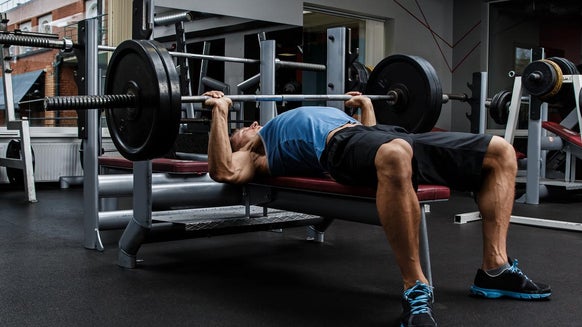
The meaning of wellness today is no longer just limited to our physical health. ‘Wellness’ is a term that encompasses everything from our more obvious physical condition to our mental, emotional and even spiritual well-being.
Many wellness habits, rituals or practices don’t need to be prescribed by a medical professional to gain traction with health enthusiasts. As a result, the industry has become awash with all kinds of DIY remedies, from the scientifically backed to the downright bizarre, with people often turning to the internet for advice.
We decided to look at the most Googled wellness trends among Americans to see how people are choosing to take care of themselves in 2021.
Which states are the most interested in wellness?
New Jersey comes out on top as the most wellness-crazed state, with nearly 12,000 monthly Google searches per million people for major wellness trends like affirmations, blue light glasses, ashwagandha, meditation and healing crystals.
Some may be surprised at the Garden State’s keen interest in wellness and the ability to self-treat – especially when it is regarded as one of the pharmaceutical capitals in the US. However, one factor could be the relatively new Mayors Wellness Campaign (MWC) - a state-wide community health initiative that provides tools and strategies for mayors and community leaders to help their residents achieve better overall health and wellness.
New Jersey is closely followed by California, New York and Massachusetts, all of which seem to be keenly interested in biohacking, online therapy and reiki, to name just a few. Some of these states may be less surprising to see, as California has long been a haven for health and spirituality while New York remains a melting pot of new and emerging trends - including self-care.
West Virginia, Mississippi and South Dakota seem to be the least interested in wellness, with just 5,497, 5,876 and 6,271 monthly searches per million people respectively.
Top 10 US states for wellness
New Jersey: 11,852 monthly searches per million people California: 11,715 monthly searches per million people New York: 11,535 monthly searches per million people Massachusetts: 11,377 monthly searches per million people Colorado: 11,059 monthly searches per million people Maryland: 10, 927 monthly searches per million people Connecticut: 10,785 monthly searches per million people Washington: 10,512 monthly searches per million people Hawaii: 10,376 monthly searches per million people Virginia: 10,356 monthly searches per million people
Top 10 Wellness Trends in the US
1. Affirmations
It may be interesting to know that the most popular wellness habit in the US is completely free, doesn’t require you to go anywhere and is accessible to almost anyone.
Google searches relating to ‘affirmations’ reach over 670,000 per month on average, with Georgia, New York, Maryland, New Jersey and Florida favouring the habit the most. Based on the concept that what we think and how we act can influence our reality, affirmations are the act of saying positive statements to yourself for the things you want to be true, or that build up your sense of self, e.g. “I am strong, I am loved, I am enough”.
Sure, it may sound a little cheesy, but there is actually some neuroscience data to support the positive effects of affirmations. In a study by Cascio et al in 2016 (1), MRI evidence suggested that certain neural pathways are increased when people practice self-affirmation tasks. Plus, the affirmations can be as general or as specific as you like, meaning this small act can be leveraged by pretty much anyone.
2. Blue Light Glasses
It may be purely coincidence, but with most Americans working from home in 2020, we’ve had ample opportunity to consider the effect so much screen time is having on our eyes.
As a result, searches for ‘blue light glasses’ and other related terms have skyrocketed to over half a million monthly searches nationwide, indicating that many people are looking to protect their eyes from the supposedly negative effects of exposure to blue light. These effects have been said to include visual fatigue, dry eyes, headaches and sometimes difficulty sleeping, which users say are reduced when wearing blue light-blocking glasses. Searches around blue light glasses are particularly high in Massachusetts, Hawaii, New Jersey, Connecticut and Rhode Island.
However, the verdict is still out on whether blue light glasses have any scientific basis. Many experts in optometry claim that the negative side-effects of computer use have been around ever since computers came into offices, without any long-term effects on eyesight or eye health. In clinical trials where participants were given a pair of blue light-blocking glasses and a pair of fake glasses, the blue light glasses-wearers were no less likely to complain of fatigue or eye issues than the fake glasses-wearers (2).
So, whether or not you prescribe to the idea of blue light glasses, know that at any rate, they aren’t harmful; at worst they may just be a waste of money.
3. Ashwagandha
Ashwagandha, the adaptogenic herb usually bought in powder form, has enjoyed an explosion of popularity in the last year, with almost 370,000 monthly searches nationwide. Known for its ability to help relieve stress, increase energy levels and boost concentration, ashwagandha is an ancient medicinal plant that’s found a big audience in the states of New Jersey, Washington, Oregon, Florida and California.
Ashwagandha powder is traditionally made from the plant’s root and has been used for over 3,000 years in Indian ayurvedic medicine to treat a variety of ailments and complaints. As part of the adaptogen family, it is said to help the body better respond to stress, reducing inflammation and balancing out blood sugar levels in the process.
So, why the new popularity all of a sudden? It is thought that the 2020 pandemic might have had something to do with ashwagandha’s popularity boom, with many people looking to natural remedies to cope with stressful events and protect themselves against disease. However, suppliers have reported that even before last year’s unusual market conditions, interest in the herb was already on the rise.
4. Meditation
It may have lost some of its ‘buzzword’ appeal (who isn’t familiar with meditation, these days?). But meditation is still a firm favourite when it comes to overall health and wellness, drawing in over 300,000 searches a month.
Meditation can be done in a variety of ways; however, the common ‘pillars’ uniting them all are usually a quiet place; being still; having a main focal point such as the breath, nature sounds or a word or feeling, and allowing thoughts to come and go without placing any particular attention to them. It’s probably one of the simplest and most effective ways to maintain positive well-being, with scientific studies showing positive improvements in blood pressure, anxiety, depression, insomnia, IBS and pain management.
A 2012 study showed that people who regularly practiced meditation for many years had more folds in the outer layer of their brain, potentially increasing the brain’s ability to process information (3). Meanwhile, a 2013 review of three studies suggested that meditation can slow, stall or even reverse changes that take place in the brain due to aging (4).
5. Manifesting
Although it isn’t backed by any scientific evidence, there is a belief in the power of manifesting, with over 200,000 Google searches for the practice every month.
The process of manifesting involves adapting certain practices and thought patterns to ‘manifest’ what you really want in life. There are different ways to do this – some rather specific and structured, and others more open and general, with varying reports of success. Based off the search data, manifesting seems to be particularly popular in Georgia, California, Nevada, Illinois and New York.
The idea of manifesting has been used commonly in literature about the law of attraction, though it is certainly not linked to this concept alone. From its roots in spiritual leaders and teachers promoting the power of the human psyche, to its journey into the mainstream by Oprah’s praise of the widely acclaimed book ‘The Secret’, and now successful manifestors sharing their stories on TikTok - it’s clear that the curiosity around manifesting isn’t going away anytime soon.
6. Reiki
Reiki, a Japanese form of alternative therapy, also makes the top list of popular wellness trends in the states, with 165,000 average searches per month. Also referred to as energy healing, it seems to be of particular interest to the people of Connecticut, Rhode Island, New Hampshire, Massachusetts and Colorado.
The word ‘reiki’ is said to mean ‘mysterious atmosphere, miraculous sign’. It’s based on the belief that when energy stagnates in the body due to physical injury or emotional pain, these blockages can lead to other illnesses. The process of reiki involves releasing these blockages with the help of a healing reiki practitioner, who places their hands lightly on the patient in various places of the body until they feel a tingling or warm sensation. If the patient has a specific wound or illness, the practitioner may choose to focus their attention specifically on one place.
So far there is no solid scientific evidence to prove the benefits of reiki, although there are many past patients who speak of its success. Immediate effects of reiki may include a feeling of being relaxed, refreshed and in less pain. There are some that report its benefits for chronic conditions, though these claims remain unproven.
Overall, reiki is at worst a harmless option for those who wish to try natural therapies alongside more conventional medicine, or simply to boost their everyday well-being. However, for those looking to treat a chronic illness, medical experts say it should not be seen as a substitute to science-based treatments.
7. Cryotherapy
Cryotherapy (literally meaning ‘cold therapy’) is a fairly well-established type of treatment whereby the patient is exposed to extremely cold temperatures for several minutes. This is said to bring about various health benefits, many of which involve reducing inflammation and nerve irritation, increasing antioxidant levels in the blood, helping to regulate hormones and boost muscle tissue healing.
Cryotherapy is commonly practiced by athletes to help them recover quickly between training, although it is becoming more widely popular among non-athletes with chronic conditions or injuries. With 165,000 average monthly Google searches, the process seems to be most widely practiced in the warmer states of Texas, Arizona and Florida, as well as Illinois and Virgina.
Cryotherapy can be delivered to just one area or to the whole body. Localized cryotherapy can be administered through ice packs, ice massage, coolant sprays, ice baths, and even through probes administered into tissue.
Full-body cryotherapy involves the individual standing in an enclosed chamber or a small enclosure that drops to between negative 200–300°F. They’ll stay in the ultra-low temperature air for between two and four minutes.
Benefits have been reported from just one session of cryotherapy, but medical advice about the therapy’s suitability should be sought before engaging.
8. Ayurveda
Ayurveda is an ancient type of Indian medicine that involves the prevention of disease through paying close attention to balance, both in the body and in a person’s lifestyle. It is based on the theory that everyone has a unique pattern of energy that comprises his or her constitution. When this constitution is disrupted by internal or external factors, the imbalances manifest as illness in the body.
Although any component of Ayurveda may be used in isolation (for example, diet, thought patterns or herbs), integrating all components of Ayurveda will have more of an optimal result. With 90,500 searches per month, the practice of Ayurveda seems to be most popular in Vermont, California, Massachusetts, Hawaii and Colorado.
Although ayurvedic practices have been reported to treat chronic conditions, evidence-based research is still very much needed to verify these claims in mainstream science. A 2015 review of several studies drew attention to the need for further research with an emphasis on methodology (5).
9. Infrared Saunas
Like many new wellness trends, the infrared sauna promises a list of health benefits and has even got the backing of celebrities such as Gwyneth Paltrow, Lady Gaga, and Cindy Crawford. With 74,000 monthly searches, the craze seems to get particular attention in South Dakota, Minnesota, North Dakota, Colorado and Washington.
The idea behind infrared saunas spans a couple of different levels. The first is that when a person spends time in a sauna, regardless of how it’s heated, the body’s heart rate increases, blood vessels dilate, and sweating increases. When this happens, there’s an increase in blood circulation, which often brings about other health benefits. This reaction is very similar to the way the body responds to low-to-moderate exercise.
The second level is the theory of interactions between the infrared frequency and water content of muscle tissue. The wavelength of this light, referred to as far infrared radiation (FIR), is an invisible form of electromagnetic energy. The body experiences this energy as radiant heat, which can penetrate up to 1.5 inches beneath the skin. It’s believed that this wavelength of light impacts the bonds between molecules in cells, which then provides the therapeutic effects supposedly linked to infrared saunas.
The research into infrared saunas is still preliminary. However, there have been several studies that have looked at using infrared saunas in the treatment of chronic health problems such as oxidative stress (6) and reducing symptoms of depression and anxiety (7).
10. Healing Crystals
Crystals (more specifically, precious and semi-precious gemstones) have been a part of traditional medicines and alternative therapies for decades. However, in recent years their popularity has soared, bringing them closer to the fore of mainstream modern life.
Though there are many reasons someone might be drawn to crystals (such as simply enjoying the way they look), many believe that the stones carry energy and possess healing properties for a variety of ailments. Google searches for ‘healing crystals’ hit around 74,000 every month, with California, Nevada, Hawaii, Maryland and New Jersey being most fascinated by their potential.
Crystals can be enjoyed in a multitude of ways - from being worn as a piece of jewellery, displayed in the home or carried around as a pretty talisman. Some use crystals on a claimed spiritual level, such as placing them on parts of the body to meditate, sleeping next to them or leaving them out in the sun to ‘charge’. It is said that different types of crystals can be used to address different physical, mental and emotional concerns – from treating illness to attracting confidence, success, calm and happiness.
So far, there has been no scientific evidence to support the idea that crystals themselves have healing benefits. However, most experts support the view that it’s about the user’s belief leading to potential placebo effects.
Take Home Message
It seems there’s no shortage of ways to self-treat and self-nurture in 2021, with science and spirituality meeting somewhere in the middle when it comes to many of today’s wellness trends.
However, as with any diet or fitness plan, it’s crucial to do your own due diligence when thinking about trying any new wellness practice. Although some crazes are at worst ineffectual, others could have serious health consequences if used in place of conventional treatments or without the help of a trained practitioner.
Always do your research and, if in doubt, stick to what the science says.
References
(1) Cascio, C.N., Matthew Brook O'Donnell, Tinney, F.J. and Falk, E.B. (2015). Self-Affirmation Activates Brain Systems Associated with Self-Related Processing and Reward and is... [online] ResearchGate. Available at: https://www.researchgate.net/publication/283545154_Self-Affirmation_Activates_Brain_Systems_Associated_with_Self-Related_Processing_and_Reward_and_is_Reinforced_by_Future_Orientation [Accessed 19 May 2021].
(2) Lawrenson, J.G., Hull, C.C. and Downie, L.E. (2017). The effect of blue-light blocking spectacle lenses on visual performance, macular health and the sleep-wake cycle: a systematic review of the literature. Ophthalmic and Physiological Optics, [online] 37(6), pp.644–654. Available at: https://pubmed.ncbi.nlm.nih.gov/29044670/ [Accessed 19 May 2021].
(3) Luders, E., Kurth, F., Mayer, E.A., Toga, A.W., Narr, K.L. and Gaser, C. (2012). The Unique Brain Anatomy of Meditation Practitioners: Alterations in Cortical Gyrification. Frontiers in Human Neuroscience, [online] 6. Available at: https://pubmed.ncbi.nlm.nih.gov/22393318/ [Accessed 19 May 2021].
(4) Luders, E. (2013). Exploring age-related brain degeneration in meditation practitioners. Annals of the New York Academy of Sciences, [online] 1307(1), pp.82–88. Available at: https://pubmed.ncbi.nlm.nih.gov/23924195/ [Accessed 19 May 2021].
(5) Semwal, D., Chauhan, A., Mishra, S. and Semwal, R. (2015). Ayurvedic research and methodology: Present status and future strategies. AYU (An International Quarterly Journal of Research in Ayurveda), [online] 36(4), p.364. Available at: https://www.ncbi.nlm.nih.gov/pmc/articles/PMC5041382/ [Accessed 19 May 2021].
(6) Inoue, S., Takemoto, M., Chishaki, A., Ide, T., Nishizaka, M., Miyazono, M., Sawatari, H. and Sunagawa, K. (2012). Leg Heating Using Far Infrared Radiation in Patients with Chronic Heart Failure Acutely Improves the Hemodynamics, Vascular Endothelial Function, and Oxidative Stress. Internal Medicine, [online] 51(17), pp.2263–2270. Available at: https://www.jstage.jst.go.jp/article/internalmedicine/51/17/51_51.7115/_article [Accessed 19 May 2021].
(7) Masuda, A., Nakazato, M., Kihara, T., Minagoe, S. and Tei, C. (2005). Repeated Thermal Therapy Diminishes Appetite Loss and Subjective Complaints in Mildly Depressed Patients. Psychosomatic Medicine, [online] 67(4), pp.643–647. Available at: https://journals.lww.com/psychosomaticmedicine/Abstract/2005/07000/Repeated_Thermal_Therapy_Diminishes_Appetite_Loss.21.aspx [Accessed 19 May 2021].







